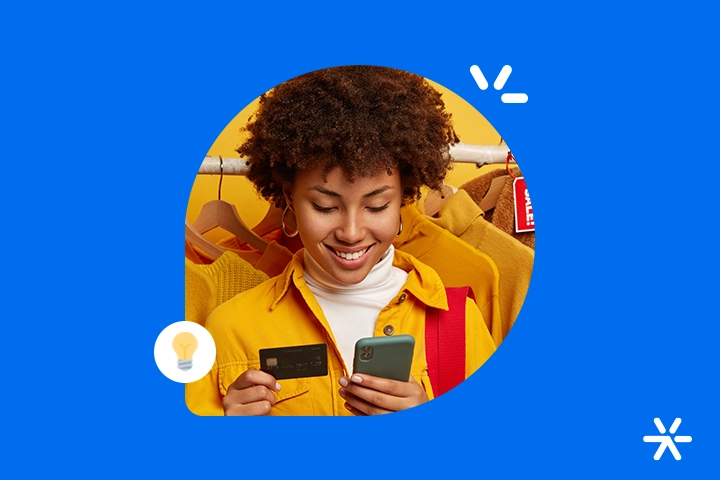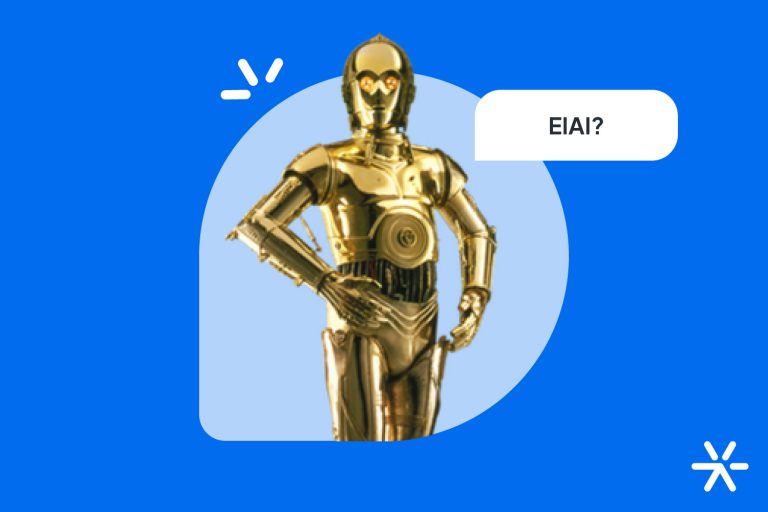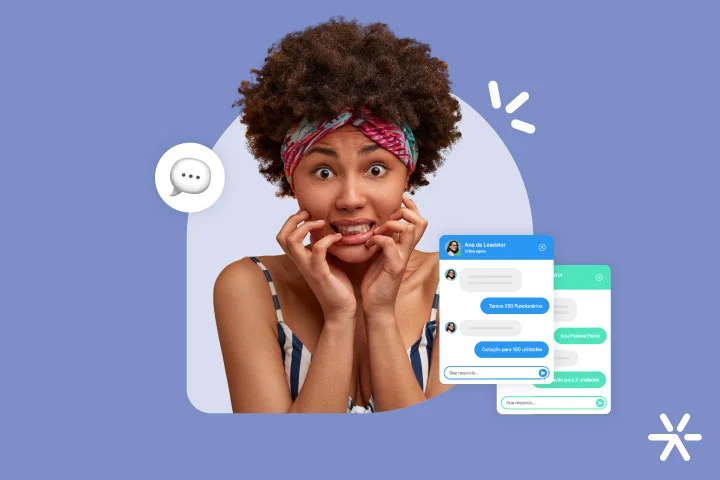5 Creative Ideas to Boost Digital Sales
Is increasing digital sales a task that requires a lot of creativity?
Not necessarily, in most cases. But creativity is always a great differentiator for any business, wherever it is applied and in any situation.
There are, for example, e-commerce businesses where if you look at their Instagram page, you’d think it’s a meme page.
There are those who use YouTube campaigns in an extraordinary way, creating content first and then ads.
I’ve brought some ideas here that step away from the obvious when it comes to advertising your e-commerce and your products.
And also some that aren’t that far from the obvious, but have been losing popularity amid so many generic and standardized actions that tend to always dominate the online sales scene.
Today’s article is in list format. I’ve brought 5 creative ideas, each with some examples and a simple step-by-step for implementation.
Let’s go?
1 – Going Beyond Promotional Posts in Digital Sales

E-commerce businesses have been using Instagram for quite some time, but not many apply its full potential.
Most use Instagram just to post their products and campaigns. This is very common among large brands and e-commerce businesses.
These brands usually either place products directly on Instagram or make thematic posts during sales seasons—Black Friday, Christmas, etc.
This is even understandable—large e-commerce businesses and brands have compliance concerns that go beyond the desires of the marketing team.
It’s possible to go much further than that, but sometimes you and your brand have similar limitations, even if smaller in scope.
If you find yourself in a situation where it’s not appropriate to test every kind of post on Instagram, you need to innovate within your possibilities.
The example I’d like to show here is from Magazine Luiza, which innovated during Black Friday 2024 with something most consumers ignore—push notifications.
You’ve probably heard about this action because of the olive oil prices, right?
But that’s just the tip of the iceberg. What stands out in the campaign isn’t the price of the olive oil, but the promotion of push notifications.
As you probably know, push notifications are those you receive on your phone when you allow apps to send notifications.
The strategy of using Instagram to announce deals is old. So is using push notifications to share prices.
But Magalu innovated by combining the two: showing crazy Black Friday prices on Instagram that come via push notifications, the brand informs followers that this is an important channel.
And this is great because the first instinct of most people is to completely ignore push notifications.
What Can You Do?
What we’ve just seen is easy to create as a strategy.
The strategy itself isn’t very complicated. What made Magalu shine in this example was the level of preparation and commitment to the action.
If we were to break it down, you can do the same as Magalu by following three simple steps:
- Identify advertising or content channels of your brand that have low engagement;
- Develop actions that bring unexpected value to this channel;
- Promote the strategy on your channel with the highest engagement.
🔎 Also read: What Is It and How to Increase Engagement on Instagram
Looking at it this way, what seems like an unattainable, one-in-a-million idea becomes much more accessible and close.
You can do this today. Most of these creative ideas for digital sales have simplicity as their main characteristic.
2 – Creating Original Content
E-commerce businesses can—and in many cases should—create their own content to help with sales.
If you think about it, the possibilities for creating content for e-commerce without involving original creation are quite limited:
- Posts showcasing the product with advertising photos;
- Blogs about products you sell and what those products do;
- Posts about action and promotion calendars;
- Posts announcing specific promotions.
If you turn on the TV right now, you’ll see an ad working with one of these points or even all of them.
But it’s possible to go beyond that in a very simple way—investing in original content. Take this example from Fini:
Here’s the link to the full post.
Fini is known for this type of material, which they started producing after launching their own e-commerce.
What they did was invest in setting up a scene and recording recipe videos using Fini products.
More simple than that is impossible. But at the same time, there’s a whole process to make the strategy work.
You need to set up the scene, buy equipment, develop the script, find actors, record, edit, etc.
It’s like the example we gave earlier: simplicity is only in the concept. It’s the details that make the difference.
What Can You Do?
There are a few different possibilities for creating your own content within your brand.
E-commerce businesses that don’t have a marketing budget to record videos might feel left out of this tip.
But you can still create your own content. There are points that you can replace with AI, which will only require your marketing team, even if it’s just you.
We’ve already listed some tools here on the blog:
➡️ Content Creation with Artificial Intelligence: How to Do It?
By working with influencers and other creators, you make it easier not to deal with recording and editing videos, but you lose a lot in editorial control of what’s created.
But if you want to continue producing original content, it’s best to focus on videos—especially Instagram Reels.
Here’s what you can do:
- Buy a professional camera or set up a setup with a phone that has a good camera, preferably recording in 4K;
- Buy a simple microphone. It could be lapel or desk. The price range is quite democratic—with R$ 200, you can already get a good microphone;
- Find someone to talk about your product. You don’t need to hire actors for simpler work—someone from your marketing team or even yourself will do;
- Get inspired by content from other brands. It doesn’t need to be as incredible as Fini’s. See this example from the Urban Flowers shoe store;
- Record several videos before releasing the first one. Having a good safety margin is key to maintaining a good posting frequency.

3 – Consider Memes!
Ok, this opinion might not be very popular in more traditional e-commerce circles, but if you’re a niche and more laid-back e-commerce, memes are a great way to bring people to your Instagram profile.
Notice that throughout the article, we’re putting a big emphasis on Instagram, and that’s no coincidence. This is a great opportunity to explain why.
Instagram allows for some features that other social networks don’t, such as carousels.
Instagram’s main competitor is TikTok in terms of quick content consumption. But at the same time, TikTok doesn’t support carousels, focusing mainly on quick consumption videos.
An Instagram post can already include up to 20 small videos or images when it’s made as a carousel.
Here’s an example:
This is the fifth post in a carousel of 20 images. The plot twist: only the last 5 images of the carousel are products. All the others are memes.
This is an extreme example because the page in question is not purely e-commerce. It’s a meme page that started selling products.
But we have the brand Pornografitti here in Brazil, which uses memes to increase engagement while also selling its products.
What Can You Do?
This strategy is not for everyone.
There are different audiences, each with its own particularities.
Here at Leadster, for example, we mix memes into our institutional communication. But we do B2B marketing, and our target audience is in the advertising industry or specializes in marketing within companies.
In other words, a younger audience that can appreciate and understand memes.
But even we, who use memes, cannot make a post entirely with memes. They need to be integrated into the information we provide, but what matters most is the information itself.
It’s important to be very careful not to overdo it and turn into a humor page!
4 – Show the Production Routine of Your Products
This is a somewhat popular action in the e-commerce world, especially with brands that produce their own products.
Showing the production routine means showing how the product is made. And in this category, anything goes.
You’ll be surprised at the versatility of this strategy. For example, you don’t necessarily have to show your factory—your warehouse full of goods already makes great content.
Take this example from Westfran Experience, a store in Franca specializing in trekking boots:
This is the third live stream the store owner and designer held throughout 2024, showing the materials used in the shoes and the workshop where the boots are assembled.
This type of content generates engagement because it’s genuine content.
What exactly is genuine content? Well, it’s content that embodies the main values of entertainment:
- It’s fun;
- It’s interesting;
- It’s informative.
Value-driven content can have other characteristics, but these three are absolutely essential.
Valuing the production routine of your product is also valuing your team, your history, and your workspace.
Suddenly, you stop being just an e-commerce and become a living, organic company that’s interesting simply by existing and bringing so many people together around the same goal.
What Can You Do?
This is another case where the steps are not very complex, but the execution may be a bit challenging, at least in the beginning.
That’s because it’s hard to judge what could turn into content and what might not be as interesting.
To summarize:
- Talk to your team to find content opportunities;
- Record a good amount of material in advance;
- Post little by little and try to measure interaction.
As I mentioned earlier, we’re using Instagram examples here because it’s the most common path for e-commerce businesses with creative ideas to boost sales.
But nothing stops you from exploring other types of publications. The next topic brings a really interesting idea in this sense, so stay tuned.
5 – Personalized Customer Service with Generative AI
This is a trend that is quickly moving from trend to necessity.
Generative AI is reaching a very interesting point now in 2025: its uses are becoming more and more democratized.
As it advances, solutions that were once impossible or prohibitively expensive are becoming more accessible.
One of these solutions is customer service through Generative AI in e-commerce.
These AIs answer the simplest customer questions without the need to put them in a waiting queue just to get basic information.
It’s important to highlight that these AIs are still in the early stages. They can read the information on the pages, and in some rare cases (like Zendesk), they can read your database and provide answers based on that data.
You should definitely apply these AIs in your e-commerce.
Especially because the less complex ones are much cheaper, generating minimal impact on your monthly budget while offering enormous advantages.
What Can You Do?
You can try Leadster.AI today in your e-commerce. By the way, when I say “today” or “now,” it’s not an exaggeration or copywriting.
It’s literally today, and literally now, if you want.
Leadster’s free test doesn’t require a credit card, and the generative AI chatbot can be installed on your website in less than 10 minutes.
It provides real-time responses based on the context of the question for all the information present on any page of your website.
Moreover, it also offers the possibility to create product descriptions in a much simpler way—automatically generating specifications.
Try Leadster.AI today by clicking the banner below. I’ll be waiting for you, okay?
Thanks for reading!








